* You are viewing Posts Tagged ‘Martin Lister’
James Brown
October 19, 2012
Conferences and Workshops, Events, Front Page, Podcasts, Project Updates, Publications
Tags: Animals, Charles Perrault, Comte de Buffon, Francis Willughby, Frogs, History of Medicine, History of Science, Insects, John Ray, Martin Lister, Natural History, Toads
The special issue publishes the proceedings of the day conference History Comes to Life: Seventeenth-Century Natural History, Medicine, and the New Science, organized by Anna Marie at The Royal Society in April (with the financial and logistical support of the project, The Royal Society, the Wellcome Trust, the John Fell Fund, and the BSHS). It features six fresh and fascinating articles from leading authorities on a wide range of topics at the intersection of seventeenth-century natural history, medicine, and science, including Buffon and animals, Francis Willughby and insects, and Jan Swammerdam’s abiding intellectual infatuation with frogs and toads. You can now enjoy early access to the articles online; the print version of the special issue will be available at the end of November. You can also listen to the podcasts from the conference. Congratulations to Anna Marie and the rest of the contributors!
Further to the CFP, you can now book for the one-day conference The Permissive Archive (UCL, Friday 9 November 2012). Celebrating the tenth anniversary of the Centre for Editing Lives and Letters, the fascinating-sounding event will ‘present a wide range of work which opens up archives – not only by bringing to light objects and texts that have lain hidden, but by demystifying and demonstrating the skills needed to make new histories’. Rescuing repositories from their persistent but wildly misleading association with neutrality, inertia, and ‘settled dust’, archival research will be ‘championed as engaged and engaging: a rigorous but permissive field’. Flying the flag for Cultures of Knowledge will be our former  doctoral student Kelsey Jackson Williams (who will present on John Aubrey’s donations to the Ashmolean Museum) and Anna Marie Roos (who, on the same panel, will offer a case study of the complex archival trajectory of four boxes of Martin Lister ephemera [pictured] serendipitously discovered among the holdings of the Sackler Library earlier this year). Other epistolary papers abound.
doctoral student Kelsey Jackson Williams (who will present on John Aubrey’s donations to the Ashmolean Museum) and Anna Marie Roos (who, on the same panel, will offer a case study of the complex archival trajectory of four boxes of Martin Lister ephemera [pictured] serendipitously discovered among the holdings of the Sackler Library earlier this year). Other epistolary papers abound.
The deadline for registrations is 1 November 2012. For further details, the schedule, and to book online, head along to the conference website.
James Brown
September 24, 2012
Events, Exhibitions, Lectures, Project Updates
Tags: Animals, Book History, Conchology, Gender, History of Science, Illustration, Martin Lister, Natural History, Seventeenth Century, Women
Post updated to include photographs
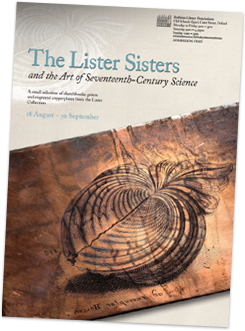 Our Martin Lister Research Fellow Anna Marie Roos has curated a small exhibition entitled ‘The Lister Sisters and the Art of Seventeenth-Century Science’, which will run in the Proscholium of the Old Bodleian Library from 18 August to 30 September (the poster can be downloaded here [pdf]). The free display showcases a unique set of drawings, prints, and copperplates of molluscs and their shells, (re)discovered among the library’s holdings by Anna Marie in 2010, which formed the basis for the illustrations in Martin Lister’s conchological magnum opus, the Historiae Conchyliorum (1685-92). Prepared by Lister’s teenage daughters, Susanna and Anna, the materials shed light on representational conventions within late seventeenth-century natural history, as well as on the gendered nature of illustrative practice in this boom era for lavishly illuminated scientific books. Anna Marie will also be giving a free lecture on ‘The Art of Science: The Rediscovery of the Lister Copperplates’ at 1pm on Wednesday 19 September in the Bodleian’s Convocation House (more info and booking on the library website). Further details of both events on The Conveyor.
Our Martin Lister Research Fellow Anna Marie Roos has curated a small exhibition entitled ‘The Lister Sisters and the Art of Seventeenth-Century Science’, which will run in the Proscholium of the Old Bodleian Library from 18 August to 30 September (the poster can be downloaded here [pdf]). The free display showcases a unique set of drawings, prints, and copperplates of molluscs and their shells, (re)discovered among the library’s holdings by Anna Marie in 2010, which formed the basis for the illustrations in Martin Lister’s conchological magnum opus, the Historiae Conchyliorum (1685-92). Prepared by Lister’s teenage daughters, Susanna and Anna, the materials shed light on representational conventions within late seventeenth-century natural history, as well as on the gendered nature of illustrative practice in this boom era for lavishly illuminated scientific books. Anna Marie will also be giving a free lecture on ‘The Art of Science: The Rediscovery of the Lister Copperplates’ at 1pm on Wednesday 19 September in the Bodleian’s Convocation House (more info and booking on the library website). Further details of both events on The Conveyor.
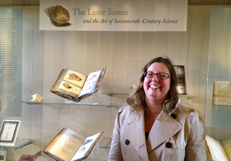
Anna Marie in front of the display

Lecturing in Convocation House
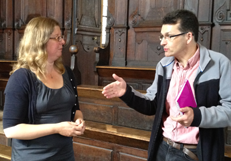
In conversation with Stephen Johnston
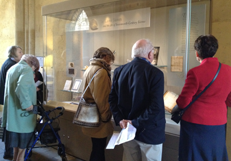
The exhibition proves a hit
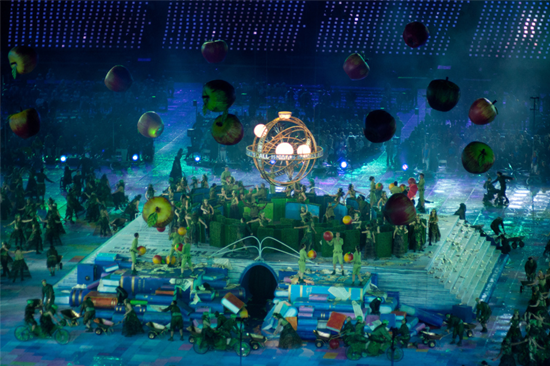
Core team member Anna Marie Roos (our energetic Martin Lister Research Fellow) was in action on BBC Radio 4 this morning dissecting last night’s magnificent science-themed opening ceremony to the Paralympic Games. The ceremony – called ‘Enlightenment’ – dramatized some key episodes in the intellectual development of Britain and Europe from 1550 to 1720, including a montage of giant rolling and floating apples inspired by Isaac Newton’s famous encounter with the fruit in his Lincolnshire garden. In the interview on the Today programme, Anna Marie – who has published on Newton’s reflecting telescope and Lister’s role in developing it – reflects on the significance of the apple incident for Newton’s theory of universal gravitation and unpacks some of the ceremony’s other, more obscure scientific references. The interview is available on the iPlayer (the segment starts at 2:19), while there’s also an interview with Anna Marie on the University’s arts blog.
James Brown
July 17, 2012
Conferences and Workshops, Events, Podcasts, Project Updates
Tags: England, France, John Wallis, Martin Lister, Networks, Pierre Bayle, Pierre des Maizeaux
Convened by Philip Beeley and Martine Pécharman, the workshop is a letter-specific installment of the MFO’s ongoing series Across the Channel: Intellectual Relations between England and France in the Early Modern Period, and will feature epistolary talks from Antony McKenna (on Pierre Bayle), Anna Marie Roos (on Martin Lister), and Ann Thomson and Sébastien Drouin (on Pierre des Maizeaux). The workshop will be held at the Maison, and there’s no need to register; for further details, please visit the workshop webpage.
James Brown
May 14, 2012
Conferences and Workshops, Events, Exhibitions, Podcasts, Project Updates
Tags: Animals, Conchology, Frogs, History of Medicine, History of Science, Illustration, Insects, Martin Lister, Natural History, Ornithology, Royal Society, Seventeenth Century, Toads
Generously sponsored by the project, The Royal Society, The Wellcome Trust, the John Fell Fund, and the BSHS, sixty-three delegates attended the day-long event, which featured papers from eleven international authorities on early modern science. Speakers discussed everything from the views of French naturalists about the differences between dromedaries and camels, to the chequered history of the publication of the cabinet of natural curiosities of Albertus Seba, to the ornithology of Francis Willughby and John Ray and the scientific representation of frogs and toads.

Helen Watt, our Lhwyd researcher.

Perusing the exhibition.

Anna Marie talks to Jill Lewis.

Early modern ornithologies.
There was a concomitant exhibition in the Royal Society’s Marble Hall, also curated by Anna Marie, featuring a display of relevant books from the Society’s collections; highlights were a bear paw clam displayed alongside its illustration by Lister’s daughters in his Historiae Conchyliorum (1692-97), and John Ray’s Historia Plantarum, in which Ray deployed the terms ‘petal’ and ‘pollen’ for the first time. In a further exciting output, Anna Marie will guest edit a special conference issue of Notes and Records of the Royal Society (December 2012) dedicated to the complex interplay between seventeenth-century medicine and natural history. Dovetailing out from Lister’s own contributions, the special issue will consider to what extent practices and technologies of natural history changed between the Renaissance and the seventeenth century, and will explore how the acquisition of knowledge concerning the natural world and new taxonomies affected the perception and treatment of beasts for medical and experimental use.
 Our pertinacious (we’re running out of adjectives) Martin Lister Research Fellow – and recent inductee of the Linnean Society – Anna Marie Roos has guest-edited a special issue of the prestigious journal Notes and Records of the Royal Society.
Our pertinacious (we’re running out of adjectives) Martin Lister Research Fellow – and recent inductee of the Linnean Society – Anna Marie Roos has guest-edited a special issue of the prestigious journal Notes and Records of the Royal Society.
 doctoral student
doctoral student 










 Join
Join 